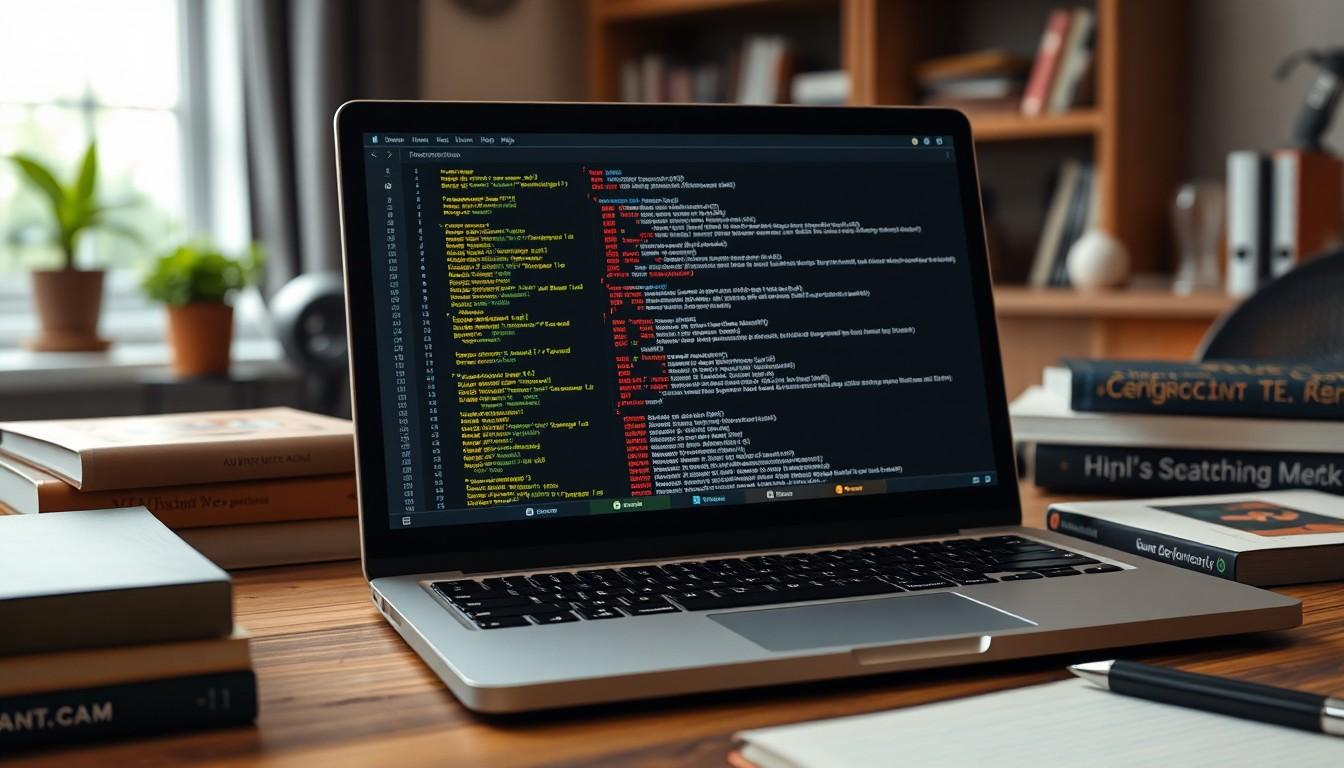In a world where everyone dreams of becoming the next gaming titan, Python game development stands out as the secret weapon. With its simple syntax and powerful libraries, Python makes coding feel less like a chore and more like a fun puzzle. Imagine crafting your own virtual universe while sipping coffee in your pajamas—sounds like a dream, right?
Python Game Development
Python game development attracts many aspiring game creators due to its simple syntax and powerful libraries. Coding in Python allows developers to focus more on creativity rather than syntax complications. Various libraries, such as Pygame and Panda3D, facilitate game design and provide tools for building 2D and 3D games.
Flexibility defines Python, enabling developers to create different game genres without extensive coding knowledge. This language supports rapid prototyping, allowing for quick iteration and testing of ideas. Learning resources, including online classes and community forums, enhance the development experience by providing support and guidance.
Strong community engagement contributes significantly to Python’s popularity in the gaming sector. Developers can access numerous tutorials and open-source projects, fostering collaboration and innovation. Game jams and hackathons further encourage creativity among programmers, allowing them to showcase projects and gain feedback from peers.
Accessibility remains a core feature of Python. Its straightforward nature encourages newcomers to experiment with coding while providing experienced developers with sophisticated capabilities. Libraries like Arcade and Pyglet offer additional functionality and ease when creating interactive features.
Notable games, including “Frets on Fire” and “Civilization IV,” highlight Python’s effectiveness in game development. Such examples prove that Python supports the creation of engaging and complex gaming experiences, solidifying its position as a valuable tool in this industry.
Getting Started With Python

Getting started with Python game development involves simple steps, from installation to choosing an integrated development environment (IDE).
Installing Python
Installation begins with downloading the latest version of Python from the official website. Users should select the appropriate installer for their operating system, whether it’s Windows, macOS, or Linux. Running the installer and following on-screen instructions completes the installation process. Adding Python to the system path ensures users can run it from the command line. Additionally, verifying the installation through the command line by typing python --version confirms the successful setup.
Choosing The Right IDE
Selecting the right IDE enhances development efficiency. Popular choices include PyCharm, Visual Studio Code, and Thonny, each offering distinct features. PyCharm provides powerful debugging tools and code completion. Visual Studio Code supports numerous extensions and customizable settings. Thonny caters to beginners with its user-friendly interface. Developers should consider personal preferences and specific project requirements when making a selection. Exploring trial versions allows experimentation before settling on the best fit.
Popular Game Development Libraries
Python offers several powerful libraries for game development, each catering to different needs and game genres.
Pygame
Pygame stands out as a user-friendly library ideal for 2D game development. It provides simple functions for creating windows, handling graphics, and managing user input. Game developers appreciate its extensive documentation and supportive community, which eases the learning curve. The library includes modules for sound effects and music integration, enhancing the gaming experience. Several popular games, including “Frets on Fire,” showcase Pygame’s capabilities. It serves as a great starting point for beginners, enabling them to create engaging games quickly while gaining essential programming skills.
Panda3D
Panda3D offers robust support for 3D game development, appealing to developers seeking advanced graphics rendering. It features integrated physics and collision detection systems, making game mechanics realistic and immersive. Known for its performance, Panda3D accommodates both open-source and commercial projects, providing flexibility in game design. Developers can leverage Python scripts to control game behavior alongside C++ for performance-critical elements. Strong community resources, comprehensive tutorials, and official documentation provide excellent support for both novices and experienced developers, making it a versatile choice for diverse projects.
Godot Engine
Godot Engine represents a complete game development platform that supports both 2D and 3D projects. Featuring its own scripting language, GDScript, developers find it intuitive and efficient. Godot’s scene system promotes modular design, allowing for easy reuse of game components. Importantly, the engine includes built-in tools for animation, physics, and rendering, streamlining the development process. Developers value Godot for its cross-platform export capabilities and active community, fostering ongoing support and enhancement. Its open-source nature invites collaboration and innovation, making it a top choice for aspiring game creators.
Game Development Concepts
Python game development encompasses various concepts essential for creating immersive gaming experiences. Understanding game mechanics and game physics plays a significant role in this creative process.
Designing Game Mechanics
Game mechanics form the rules and systems governing gameplay. Successful mechanics engage players, providing challenges and rewards. Developers often use feedback loops to enhance player interaction and foster a sense of progression. Important aspects include defining objectives, crafting engaging challenges, and incorporating player choices. Balancing difficulty ensures that players stay motivated while not feeling overwhelmed. Prototyping mechanics early allows for timely adjustments based on player feedback. Iterative testing refines these core elements, ensuring a smooth and enjoyable user experience.
Understanding Game Physics
Game physics simulate real-world interactions within a virtual environment. Accurate physics enhances realism, allowing players to interact more intuitively with game elements. Developers consider key principles like gravity, collision detection, and fluid dynamics when designing their worlds. Libraries such as Pygame offer basic physics functionalities, while others like Panda3D provide advanced options. Integrating physics adds depth to gameplay, influencing how characters move, objects collide, and environments respond to actions. Understanding physics promotes more engaging and believable gaming experiences, keeping players immersed in the game world.
Building A Simple Game
Creating a simple game in Python involves several fundamental steps, providing a hands-on introduction to game development.
Project Setup
Setting up a project includes organizing files and directories. Developers typically start by creating a main project folder. Inside this folder, they can create subfolders for assets like images and sounds. Installing necessary libraries, such as Pygame, occurs next. This installation allows developers to harness Pygame’s functionality, enhancing their game development capabilities. Another crucial step is setting up an IDE, which helps facilitate coding and debugging. Developers often choose IDEs like PyCharm or Visual Studio Code for their user-friendly interfaces and powerful features. By preparing this environment, developers create a solid foundation for their game.
Basic Game Loop
Implementing a basic game loop is essential for any game. This loop manages game state and handles events. It starts with initializing Pygame, which sets up the game window. The loop then enters a continuous cycle where it checks for user inputs, updates game logic, and redraws the screen. Developers often structure the loop to run until the player decides to exit. Within this loop, updates occur in a series of steps. First, event handling manages keyboard and mouse actions. Next, updating game mechanics involves adjusting positions and states of game entities. Finally, rendering draws the current state to the screen. This cycle creates an interactive gaming experience that keeps players engaged.
a fulfilling creative outlet
Python game development opens up a world of creativity for both beginners and seasoned developers. Its user-friendly syntax and powerful libraries make it an ideal choice for anyone looking to dive into game creation. With tools like Pygame and Panda3D, developers can easily bring their ideas to life and experiment with various game mechanics.
The supportive community surrounding Python fosters collaboration and innovation, ensuring that help is always available. As developers embark on their gaming journey, they’ll find that the process is not just about coding but also about storytelling and engagement. Embracing Python for game development can lead to exciting opportunities and a fulfilling creative outlet.

